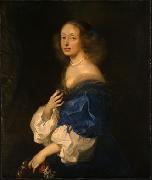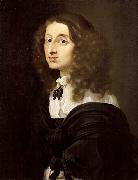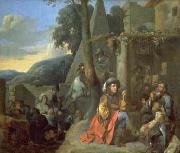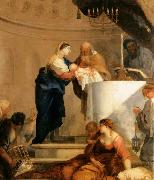(2 February 1616 - 8 May 1671) was a French painter and engraver. His chef d'œuvre is The Crucifixion of St. Peter made for the church of Notre Dame.
The Finding of Moses, c. 1650 (National Gallery of Art, Washington)Bourdon was born in Montpellier, France, the son of a Protestant painter on glass. He was apprenticed to a painter in Paris. In spite of his poverty he managed to get to Rome in 1636; there he studied the paintings of Nicolas Poussin, Claude Lorrain and Caravaggio among his eclectic selection of models, until he was forced to flee in 1638, to escape denunciation by the Inquisition for his Protestant faith. Bourdon's facility rendered him adept at portraiture, whether in a dashing Rubens manner or in intimate, sympathetic bust-length or half-length portraits isolated against plain backgrounds that set a formula for middle-class portraiture for the rest of the century, landscapes in the manner of Gaspar Dughet or cappricci of ruins, mythological "history painting" like other members of Poussin's circle or the genre subjects of the Dutch Bamboccianti who were working in Rome. His eclectic range of styles have given art historians exercise in tracing his adaptation of his models, while the lack of an immediately recognizable "Bourdon style" has somewhat dampened public appreciation.
In 1652 Christina of Sweden made him her first court painter. Bourdon spent most of his working career outside France, where, though he was a founding member of the Academie de peinture et de sculpture (1648), he was for long largely dismissed as a pasticheur, a situation partly rebalanced by a comprehensive exhibition in 2000 of his work at the Musee Fabre, where the collection includes a fine Lamentation painted in the last years of his life.
His success required the establishment of an extensive atelier, where, among his other pupils worked Nicolas-Pierre Loir and Pierre Mosnier. He died in Paris in 1671.










